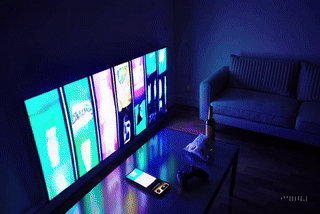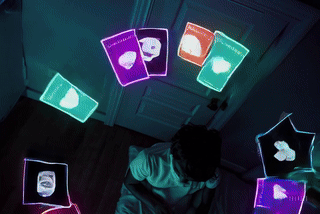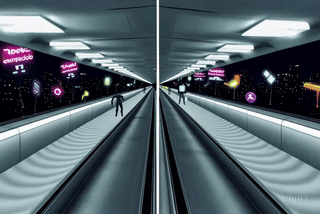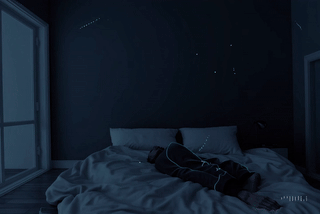The Kids are Over-Engineered
Screens, logistics, GLP-1s and SSRIs, and how they quietly rewrote drinking, sex and going out.
I’ll be speaking at Content London and CineAsia soon. Say hi. In the meantime, help a guy out and take the Strange Loop culture survey.
And if you landed here first, read Part I of this Gen Z series so you know what we’ve already broken down before we start on the wiring.
They were supposed to binge, black out, make three bad decisions and one good story, then crawl back into the workforce with a hangover and a marriage.
Instead you look up and discover a growing minority of twenty-somethings who don’t drink, don’t hook up, don’t go out and can name three different GLP-1 brands but not the nearest nightclub. Your parents spent their twenties trying not to get pregnant in the toilets of a bar; their grandchildren are trying to get eight hours’ sleep and a clean “readiness score”.
Every few weeks someone posts a photo of an empty dance floor and a lone disco ball, declares Gen Z a public menace to nightlife and blames them for not drinking, not clubbing, not shagging. The vibe is: civilisation has fallen because no one spilled a Jägerbomb on my shoes last night. But underneath the boomer panic is something much weirder and more interesting: a cohort whose fun, sex, drugs and social life have all been quietly refactored by broadband, housing costs, pharmaceuticals, and a UX team.
Part I was the autopsy: fewer drinks, fewer weddings, fewer parties, more people in their twenties who haven’t had sex in a year than your grandparents consider spiritually safe. Part II is the crime scene reconstruction. If this isn’t just “kids these days” but an actual stack change, what are the components? How do you manufacture a generation that treats the nightclub like a pop-up and the group chat like a permanent address?
Let’s get to it.
1. Home turned into a casino with better UX
Start with the obvious: Friday night is still a thing, just on the couch.
Between 2003 and 2024, the time Americans spent attending or hosting social events fell by 50%; for 15–24-year-olds, party time collapsed by 70%. The median weekend now involves 4% of Americans at a party and 96% doing literally anything else.
This brings new depth to house party:
a phone that can serve you every friend, crush and creator you’ve ever liked
a gaming rig
a delivery app
and a vape charging next to your laptop.
Irish youth data is instructive here. School surveys show adolescent drinking fell sharply through the 2000s and 2010s, with fewer 15-year-olds having ever drunk at all. But a 2025 analysis also points out that by 2019, once young people did start drinking, they drank above the national average, and youth drinking has been creeping back up again since 2018.
So you get this new profile: less early initiation, more time at home, but when they do go out, they hit it hard and then disappear back to the feed.
Cannabis and vapes fit neatly into this home-stack. Gallup finds about a quarter of 18–34-year-olds now smoke marijuana, while cigarette smoking in that group is down in the low single digits. Regular cannabis use is highest among the least-educated and lowest-income groups. The classic working-class “pints then kebab” pattern quietly mutates into “weed, a Juul and TikTok until 3 a.m.”
Porn, parasocial intimacy and the visible spread of asexual and aromantic identities do similar work for sex. A non-trivial slice of young men will tell you, quite cheerfully, that their libido lives in their browser history and they’re not especially motivated to go find a person who breathes.
If you grew up when “fun” required other bodies in a physical room, this all looks like collapse. If you grew up with decent broadband, it feels like optionality.
2. Sex became UX
In Part I we saw the blunt numbers: among 20–24-year-olds, the share of Millennials born in the 1990s who had no sexual partner after age 18 is 15%; for those born in the 1960s it was 6%. By the late 2010s, roughly one in three US men aged 18–24 and about one in five women in that age group had no sex in the past year.
The lazy take is “prudish generation”. The real story is logistics.
Dating apps did what software always does: they solved the matching problem and ignored everything downstream. You can now sit in a bedroom in your parents’ house and match with more people in one evening than your mom met in her entire second year of university (and let me tell you, she met a lot of people). But the app does not provide:
a flat to bring someone back to
a cheap, safe way home after the last train
time away from shift work
or a nervous system not wrecked by five years of ambient anxiety.
Ueda’s JAMA study makes it painfully clear that the biggest risk factors for sexual inactivity in young men aren’t “bad attitude” but being a student, unemployed or low-income, all of which roughly triple the odds of having had no sex in the past year compared with having a full-time job.
So the sex recession is less a sudden outbreak of moral sainthood and more a UX bug: the “meet” screen works beautifully, the “actually see each other” screen fails to load.
3. One cohort, two speeds
“Averages lie” is statistical hygiene. In this cohort it’s a survival skill.
Gender
The moderation story is led by women. In Irish data, last-year drinking among 15–24-year-old females fell more sharply than among males; in England, teen girls have nearly caught boys on not drinking at all.
At the same time, the sexual dry spell is heavily male. By the late 2010s, about 28% of US men aged 18–30 had no sex in the previous year, versus ~18% of women. Britons 16–24 tell a similar story: monthly sexlessness for young men sits at 29% in 2001 and 2012, completely flat, while women climb from 23% to 29%. The drought is not evenly shared.
Orientation
US school data shows binge drinking declined for straight and LGB teens from 2005 to 2017, but the fall was faster for straight students, widening the gap. In adulthood, GSS analyses suggest gay and bi men in their twenties are more likely to report a dry year than straight men (~19% vs 13%), while lesbian and bi women sit close to straight women.
So queer youth are neither spared nor mirrored by the mainstream: they’re running their own script, with bars and clubs still functioning as community infrastructure even as everything else migrates to apps.
Class
Education doesn’t rescue anyone from these trends, it just changes the slope. Between 2000 and 2018, the share of sexually inactive 18–30-year-olds rose for degree-holders and non-graduates alike to around 15% and 22% respectively.
Marriage, however, clearly migrates upmarket. Among US 25–34-year-olds, the share married dropped faster for the non-degree group, leaving degree-holders more likely to be in legal, cohabiting partnerships by 2018. Combine those trends and you get more working-class young adults spending their twenties single, under-employed and living in shared or parental housing.
Teen birth rates falling by 50%+ since 2007 in both the UK and US are the one thing everyone cheers. That drop reflects later sexual debut and better contraception, and the largest absolute improvements sit with higher-SES teens. The map of risk is not flat; it looks like a heat map of class.
Put those pieces together and you get two speeds inside the same cohort:
Track A: health-coded restraint (more female, more educated, often straight);
Track B: stalled or risk-shifted (more male, some LGBTQ+, more economically insecure), with isolation and concentrated risk living uncomfortably close together.
4. Fun had a moral rebrand
The other structural change is symbolic: what counts as aspirational.
In 2003, you could still be “the fun one” by being visibly wrecked. In 2025, the image doesn’t land. Gallup finds that for the first time, a majority of Americans (53%) say even moderate drinking (one or two drinks a day) is bad for health, up from 28% in 2018. Among 18–34-year-olds, about two-thirds now say moderate drinking is harmful.
The same polls show the overall drinking rate has fallen to 54%, the lowest since 1939. Young adults have led that decline; in 2025 only about half of 18–34-year-olds tell Gallup they drink at all, down sharply in just a few years.
You can see the aesthetic shift everywhere: in the aisle full of 0.0% “spirits”, in sober-curious club nights, in Love Island quietly capping contestants’ booze, in the way hangovers are talked about as a productivity tax rather than a fun tax. Moderation and consent literacy have become social capital. Being sloppy drunk now reads as low-status, or unsafe, or both.
In other words, fun didn’t go away, it just got a dress code. If the 1990s rebelled with shots, the 2020s rebel with a high-protein breakfast and eight hours of sleep.
5. Chemistry and dashboards
Behind all of this is a cohort that is simply more medicated and more measured than the one before.
Between 2016 and 2022, the monthly antidepressant dispensing rate for US 12–25-year-olds rose 66.3%, from about 2,576 to 4,285 prescriptions per 100,000. The increase accelerated after March 2020, especially for young women. SSRIs are not the villain of the piece, but their side-effects (reduced libido, delayed orgasm, emotional flattening) are well-known. Stack this against already high baseline rates of anxiety and depression and you start to see why a portion of the cohort simply has less drive for chaotic intimacy.
Layer on GLP-1 agonists like semaglutide. Originally diabetes and weight-loss drugs, they’re now being actively investigated for alcohol use disorder. A 2025 JAMA Psychiatry trial found that adults with AUD on low-dose semaglutide drank about 40% less alcohol during a controlled session and reported significantly lower cravings than those on placebo. Observational work suggests these drugs are associated with lower rates of hospitalisation for AUD than even dedicated anti-craving meds.
Add the wrist. Apple Watches, Fitbits, WHOOP straps and friends are disproportionately wrapped around 18–34-year-old wrists. They do a very simple thing: they turn your night out into a graph. The screen shows you what three hours of sleep and a heart-rate spike do to your “readiness score” the next day. For a generation trained to see their body as a dashboard of metrics, that feedback loop matters.
Put SSRIs, GLP-1s and wearables together and you get a non-trivial minority of young people whose brains and devices are jointly nudging them towards flatness. Think endocrine, not morality.
The line under the wobble
COVID, cost-of-living and policy shocks did compress and distort all of this. Weddings fell 61% in 2020; one in four late-night venues never reopened; youth alcohol and drug use hit record lows in 2020 and then bounced back.
But the key point is that the bounces don’t reset the baseline. Irish youth drinking picked up again after 2018, but not to 2002 levels. U.S. partying had a little post-lockdown uptick, but ATUS still shows young people spending far less time together IRL than in 2003.STIs snapped back hard, while sexlessness and later partnering kept trending.
The long curve is this: less routine alcohol, later and less frequent sex, fewer institutions whose business model is “put a lot of bodies in one room and hope they buy rounds.”
The lazy headline is that Gen Z are boring
The data story is that they are a cohort whose attention, logistics, chemistry and incentives have all been re-wired at once.
If you grew up in a world where fun meant leaving the house, this looks like decline. If you grew up in a world where the house already contains your friends, your games, your queue of videos, a cannabis pen and a pill you take for your brain chemistry, it looks like… Tuesday.
The kids are not alright or not-alright in any simple way. They are living inside a different stack. The rest of us are just squinting at the output.






